Women Looking at Women
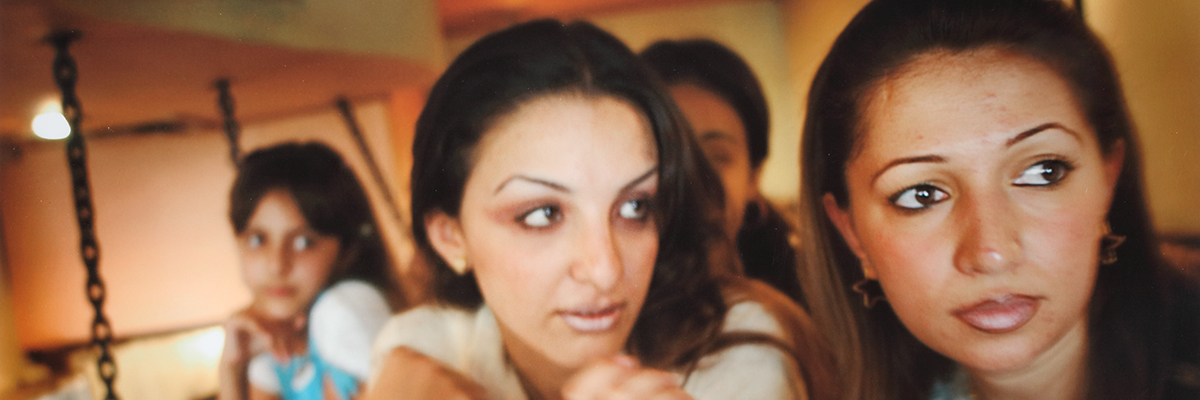
Kael Alford (American, born 1971), Baghdad (detail), 2004, pigmented inkjet print, 13 × 19 inches, gift of Edwin A. Robinson, 2010.25.13.
Is there a “female gaze”? This section focuses on images of girls and women made by women working across a range of photographic practices from photojournalism and civil rights photography to portraiture and conceptual works. For practitioner Kael Alford, being a woman gave her unique access to her subjects, women in the Middle East. For other photographers, including Sally Mann, Nan Goldin, and Susan Meiselas, the decision to focus on girls and women emerges from their personal circumstances and their drive to understand and investigate how gender has shaped their lives. Other artists interrogate and challenge photographic stereotypes of femininity and sexuality. Rather than proposing a singular “female gaze,” we invite you to consider how the conditions of making a work, including the gender identity of artist and subject, shape and condition what you see.
-
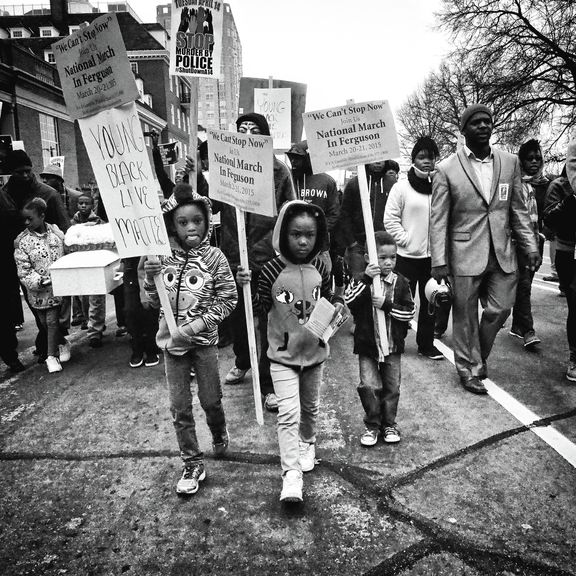
Sheila Pree Bright is one of Atlanta’s most prominent photographers working today. For the ongoing series #1960Now, she travels with and photographs the civic actions and protests of the Black Lives Matter movement. The title refers to the similarities between these contemporary protests and the civil rights movement and photography of the 1960s. The hashtag in the title refers to social media’s growing role in circulating images and defining current events. Here, two young girls and a little boy are at the forefront of a march in Ferguson, emphasizing how the youth of today can be change makers for tomorrow.
#1960Now_Ferguson_protest: National March in Ferguson, “We Can’t Stop” Mike Brown, Ferguson, MO, March 2015
Sheila Pree Bright, American, born 1967
2015
Gelatin silver print
16 × 16 inches
Purchase with funds from the Friends of Photography
2017.222 -
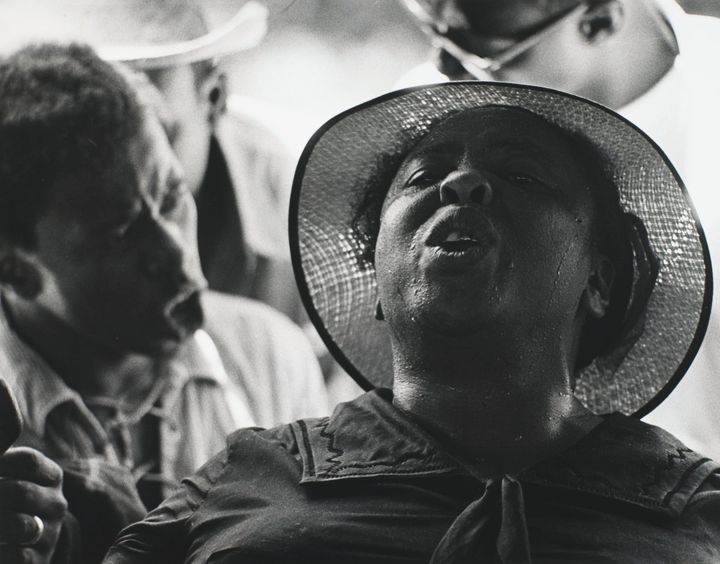
Charmian Reading was a photographer for the Medical Committee for Human Rights, formed in 1964 to support the Mississippi voter registration campaign and to provide public health services in rural areas with limited or no access. Here, she portrays Fannie Lou Hamer, the youngest of twenty children in a family of sharecroppers, who came to prominence during the 1964 Democratic Convention as the leader of the Mississippi Freedom Democratic Party, which challenged the all-White regular delegation. Here, Hamer leads a round of “We Shall Overcome,” the closing anthem at most movement gatherings.
Fannie Lou Hamer Singing, March Against Fear, Mississippi
Charmian Reading, American, born Canada, 1930–2014
1966, printed ca. 1990
Gelatin silver print
10 1/2 × 13 7/16 inches
Purchase with funds from the H. B. and Doris Massey Charitable Trust and Lucinda W. Bunnen for the Bunnen Collection
1994.62 -
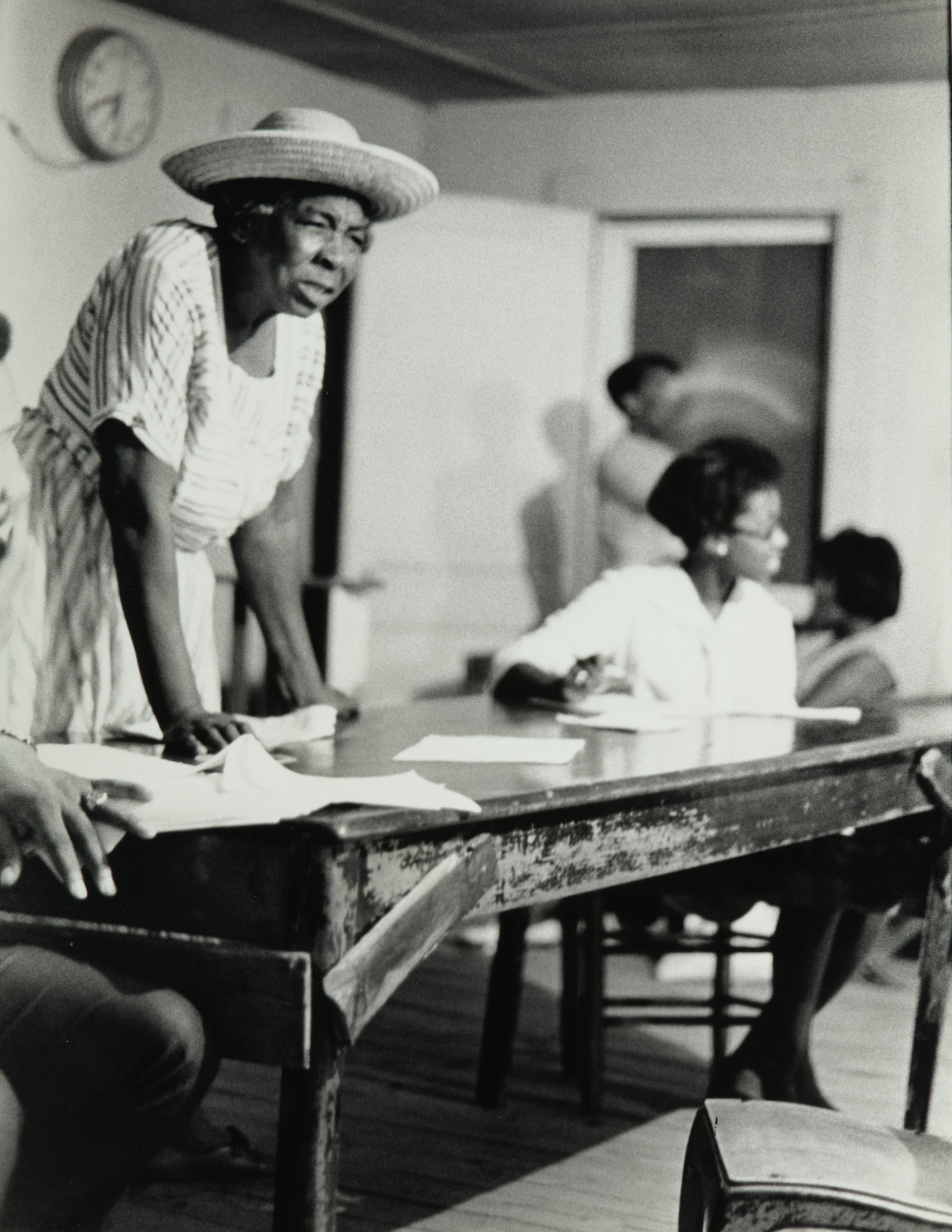
Dr. Doris Derby is an educator, anthropologist, and photojournalist based in Atlanta. In the 1960s and 1970s, she was an active member of the Student Nonviolent Coordinating Committee (SNCC), the Mississippi Freedom Democratic Party, and the Adult Literacy Project. Derby’s photographs reflect her interest in and concern for the role of poor, disenfranchised women during the movement. Many women had been fired from their jobs for registering to vote; in response, they built skill-based cooperatives and community groups that kept their families and communities together in very difficult times.
Grass Roots Organizer, Mississippi
Doris Derby, American, 1939–2022
1968
Gelatin silver print
Purchase with funds from Jeff and Valerie Levy
2007.188 -
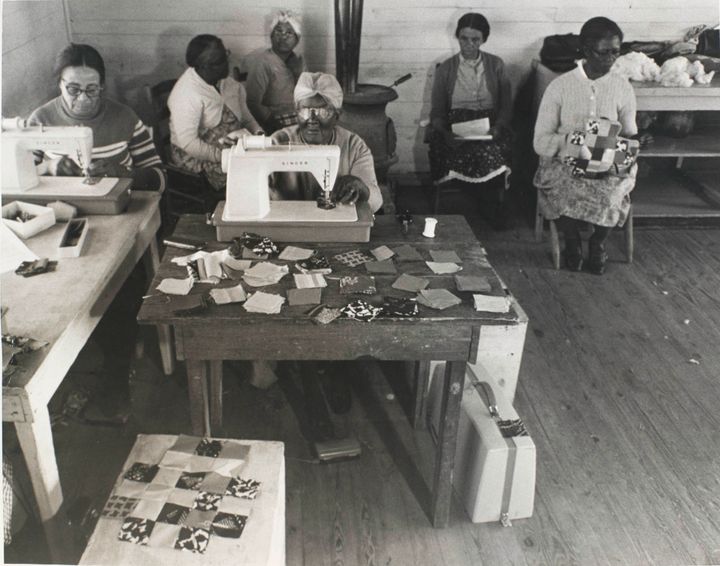
Quilting Cooperative, Aberdeen, Mississippi
Doris Derby, American, 1939–2022
1968
Gelatin silver print
Gift of the artist
2007.192 -
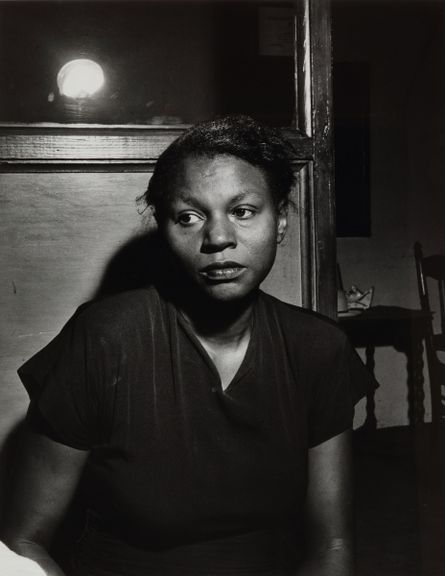
Born in Germany, Marion Palfi worked as a freelance photographer and portraitist in Berlin before fleeing the Nazis in 1936, eventually marrying an American soldier and emigrating to the United States. Settling in New York, she befriended Harlem Renaissance writers Langston Hughes and Arna Bontemps and soon began to photograph for numerous Black publications and causes. In the late 1940s, she documented the virulent effects of racism and poverty in the United States and published a devastating study on racial violence in Georgia that includes this portrait of the widow of Caleb Hill, the victim of the first reported lynching of 1949.
Wife of a Lynch Victim, Irwinton, Georgia
Marion Palfi, American, born Germany, 1907–1978
1949, printed 1977
Gelatin silver print
13 3/8 x 10 9/16 inches
Gift of Ben Bivins
2000.262.14 -
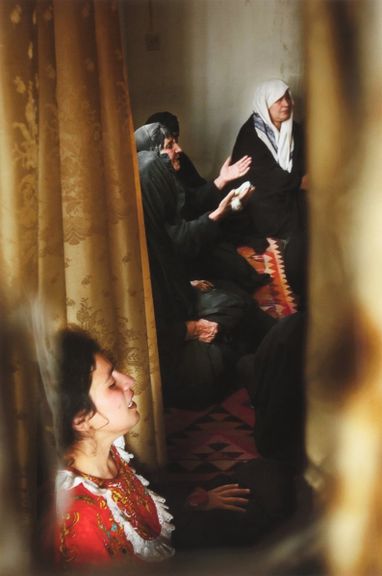
In this photograph, taken during the US invasion of Iraq, women mourn family members who were killed when a missile landed on their home; the missile had launched accidentally from an ammunition collection point under US military control. Alford explains there are “advantages and disadvantages to being a woman in the field. The advantages are that we tend to appear less threatening to men and may raise fewer suspicions at times. We also get better access to other women. We’re confusing—we act and dress like men but we’re not. In some cultures, strange men are not allowed to be in the same room with local women, while we tend to get treated as what I call ‘the third sex’ and are invited into both women’s and men’s spaces.”
Zafrania
Kael Alford, American, born 1971
2003
Pigmented inkjet print
13 × 19 inches
Gift of Edwin A. Robinson
2009.77.11 -
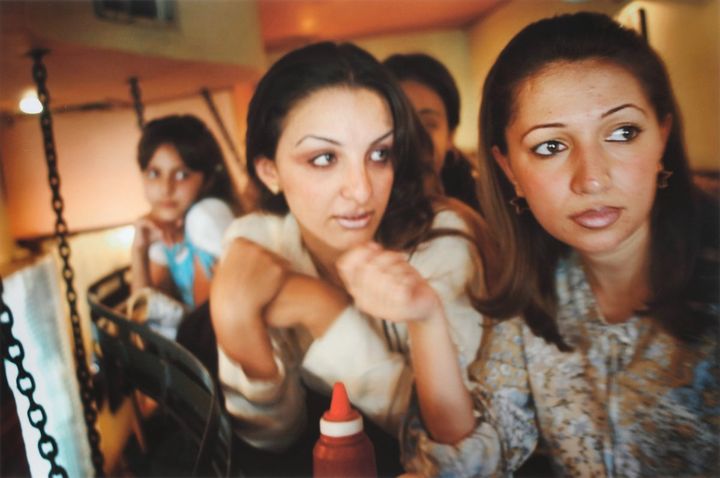
Kael Alford is a photojournalist who has covered culture, politics, and conflict in the Balkans and the Middle East. Her work documenting the US-led invasion of Iraq in 2003 shows the impact of the war on Iraqi citizens who live amidst the daily threat and effects of violence. Working unembedded, rather than traveling with the US military, allowed her freedom to move around the country and connect with civilians, though it also placed her in more precarious positions with less logistical support. University students, seen here, fear being singled out by radical militia groups who have threatened women for attending university or for appearing in public without covering their heads.
Baghdad
Kael Alford, American, born 1971
2004
Pigmented inkjet print
13 × 19 inches
Gift of Edwin A. Robinson
2010.25.13 -

After studying to be a filmmaker, Graciela Iturbide turned to photography and launched her career as Manuel Álvarez Bravo’s assistant. She traveled around Mexico, documenting the lives and customs of the country’s Indigenous peoples. Iturbide met the subject of this portrait, Magnolia, in Juchitán, a town in the state of Oaxaca where the existence of three genders is widely accepted by the Zapotec people. Magnolia is a Muxe—someone assigned male at birth but who identifies neither as male nor female. After asking to be photographed, Magnolia chose outfits to wear and applied makeup, thus thoroughly dictating how to be seen. The handheld mirror seems to be a nod to the multiplicity of Magnolia’s identity.
Magnolia, Juchitán, México
Graciela Iturbide, Mexican, born 1942
1986
Gelatin silver print
20 × 16 inches
Purchase
2013.165 -
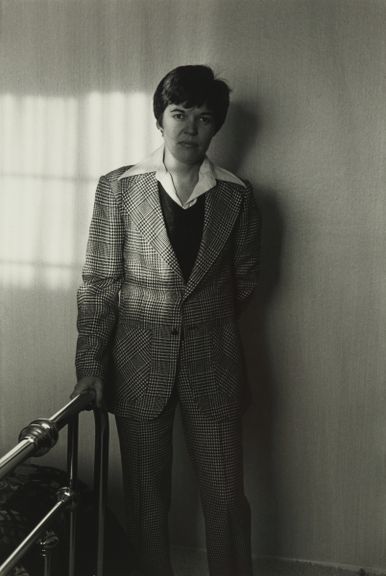
Before Anne Noggle returned to school in her forties to study photography, she was an aviator and military pilot who flew during World War II and the Korean War and achieved the rank of captain in the US Air Force. Her photographs explore women, sexuality, identity, and the aging process. She once noted that faces are “empty until they reach their 40s. Then they become photographable.” In this work, she captures her one-time partner, Nancy, wearing a male friend’s suit, her face cast half in shadow and gazing warily at the camera.
Larry’s Suit
Anne Noggle, American, 1922–2005
1975
Gelatin silver print
12 × 8 inches
Gift of Lucinda W. Bunnen for the Bunnen Collection
1995.96.14 -
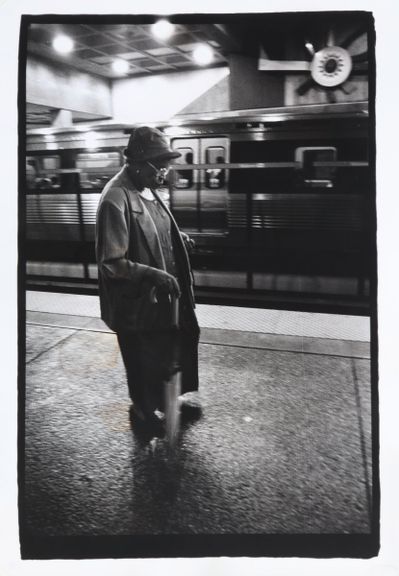
shelia turner was a documentarian of Atlanta’s music scene and the city’s people, an educator, and a founder of Sistagraphy, a collective of Black women photographers. The Federal Reserve Bank of Atlanta commissioned turner and two other artists to document the neighborhood around 10th and Peachtree Streets before and during the construction of their new building. turner focused on the small businesses and especially the neighborhood’s residents, such as this weary woman on the platform of the Midtown MARTA station, perhaps on her way to or from work.
Untitled
shelia turner, American, 1961–2018
2001
Gelatin silver print
17 × 11 1/2 inches
Gift of the Federal Reserve Bank, Atlanta
2002.61 -
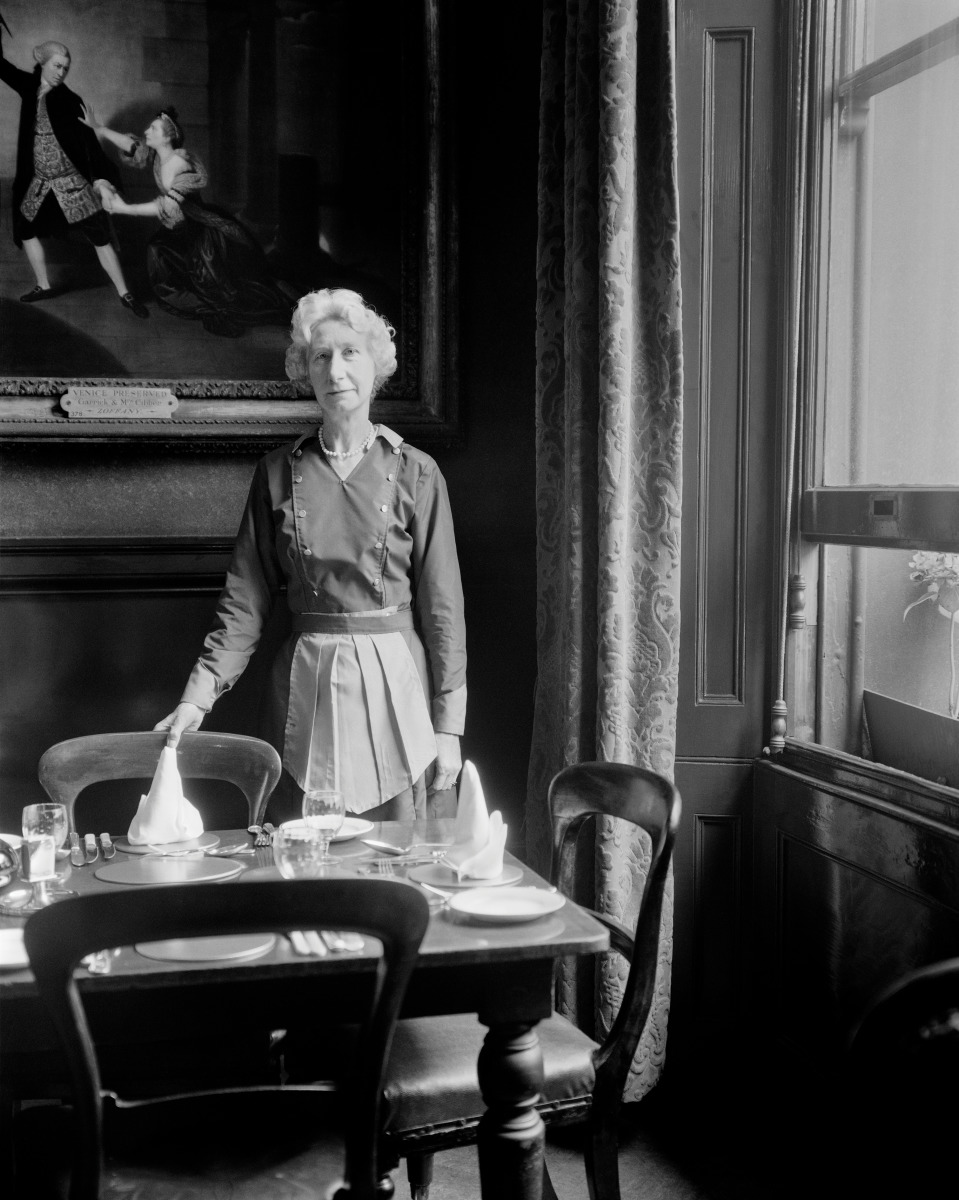
Called by a New York Times critic “the most famous unknown photographer in America,” Evelyn Hofer explored the relationships between people and their environment in a series of photo books devoted to various cities in Europe and America. She was especially noted for her keen ability to capture her sitters’ bearing, expression, and dress in a way that revealed the subtle imprint of class, labor, and place on them. This work, made for her 1962 book London Perceived, shows a mature waitress standing proudly but with a certain tentativeness behind her beautifully set table in London’s oldest “gentlemen’s club,” which remains exclusively male today.
Waitress, Garrick Club, London
Evelyn Hofer, American, born Germany, 1922–2009
1962
Gelatin silver print
14 3/8 × 11 3/4 inches
Gift of Daniel Greenberg and Susan Steinhauser in honor of Brett Abbott
2016.458 -
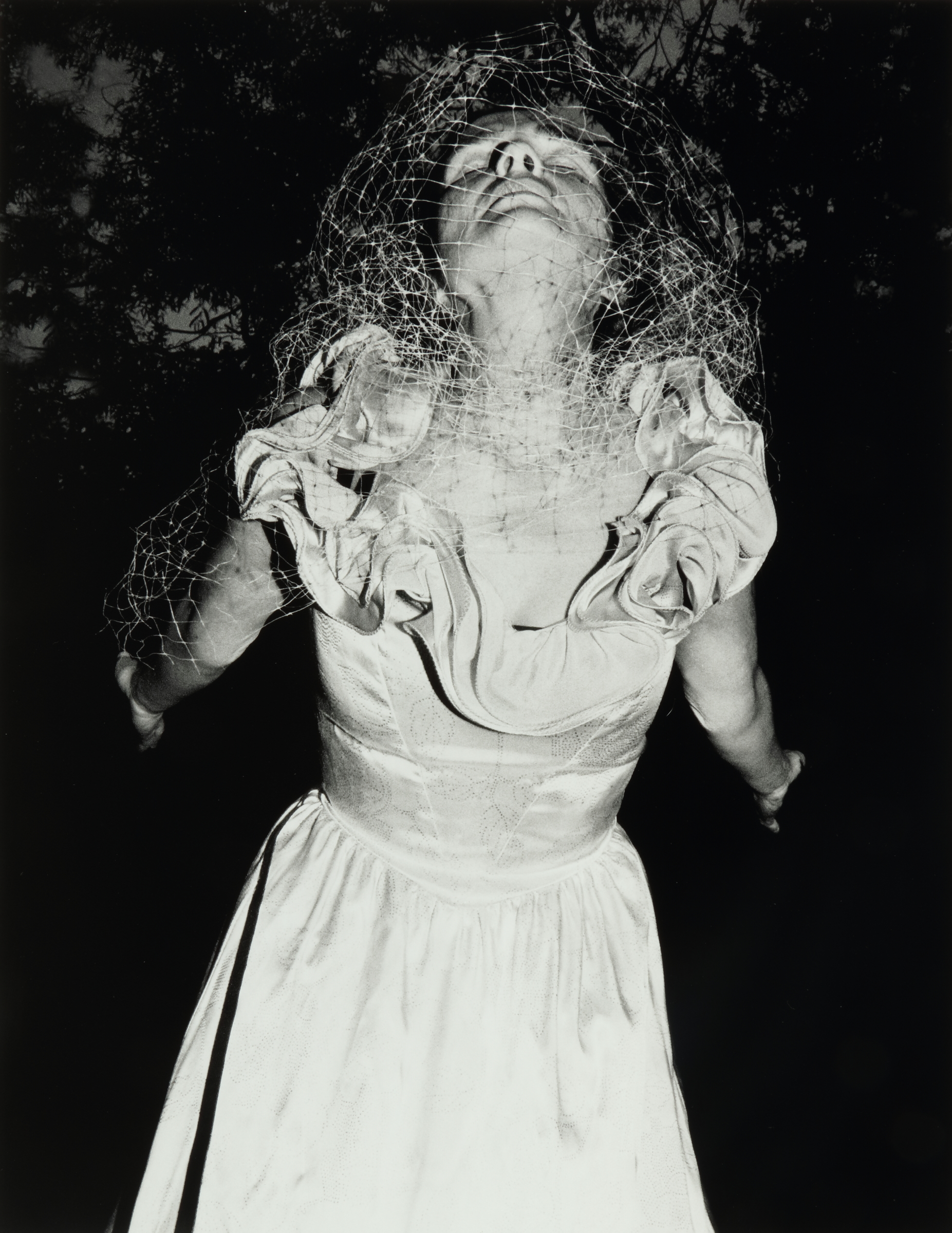
Lucinda Bunnen’s ability to wrest the extraordinary from the ordinary is evident in this picture of a woman caught in a moment of extreme abandon, with her head and arms thrown back, a fishnet veil covering her face. Normally associated with delicacy and feminine decorum, the veil here appears more like an otherworldly ectoplasm threatening to suck the woman up into the inky black night.
Molly With Veil, Black Mountain College, North Carolina
Lucinda Bunnen, American, 1930–2022
2006
Pigmented inkjet print
16 × 12 3/8 inches
Gift of Lucinda W. Bunnen for the Bunnen Collection
2013.422.6 -
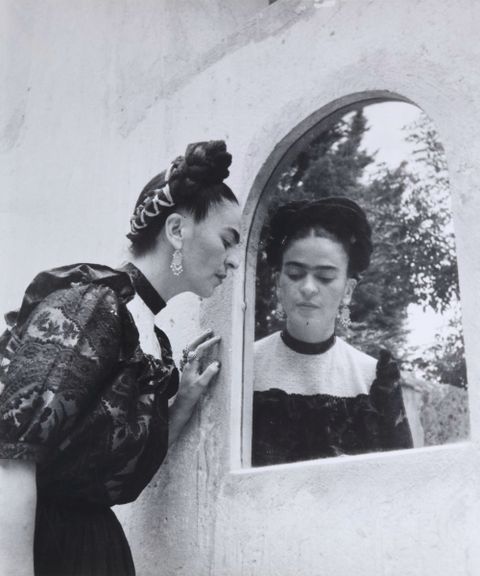
Lola Álvarez Bravo began photographing while assisting her husband, photographer Manuel Álvarez Bravo, in his studio. After they separated, she committed to photography as a career and drew her subject matter from her surroundings, casting a compassionate lens on the people of Mexico, including the impoverished and those living in the margins of society. She was fast friends with legendary Mexican artist Frida Kahlo and often photographed her; her gallery was also the first and only space to host an exhibition of Kahlo’s work in Mexico during her lifetime.
Frida looking into mirror
Lola Álvarez Bravo, Mexican, 1907–1993
1944
Gelatin silver print
8 3/4 × 7 1/4 inches
Purchase with funds from Margaretta J. Taylor
2012.278 -
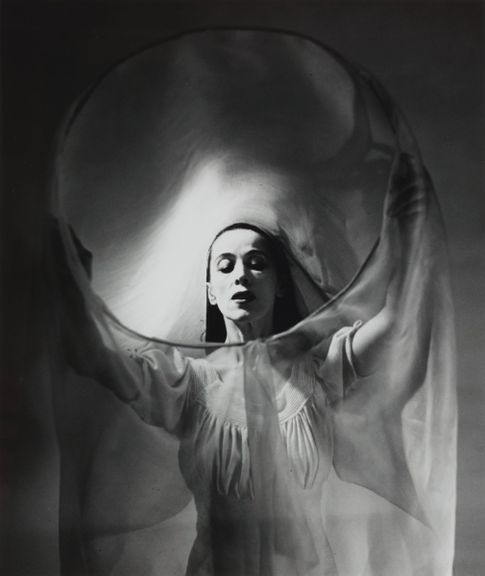
Barbara Morgan focused on painting, printmaking, and teaching art until 1932, when the birth of her first child brought her to photography, a medium she felt she could practice more efficiently and quickly. Her husband Willard, who was already a preeminent photographer, aided her in this transition; however, Morgan’s distinctive contributions to photography were entirely her own. Working with renowned modern dancers, including a ten-year collaboration with Martha Graham (pictured here), Morgan ushered in a new form of dramatic, highly kinesthetic dance photography. She also cofounded the important photography magazine Aperture.
Martha Graham, El Penitente
Barbara Morgan, American, 1900–1992
1940
Gelatin silver print
11 7/8 x 9 15/16 inches
Purchase
1987.40 -
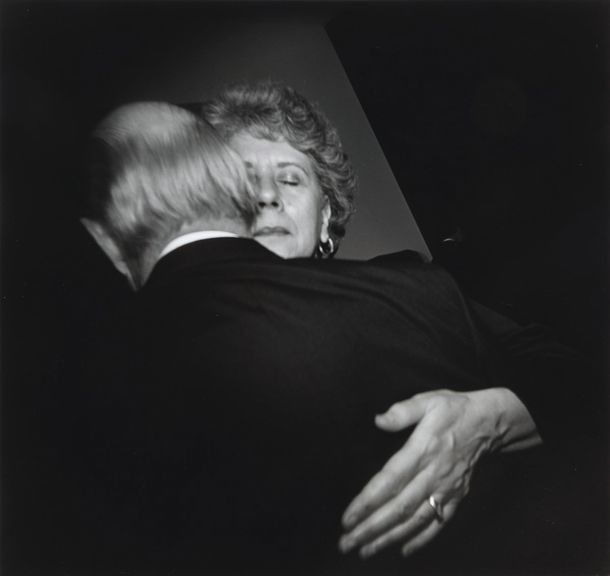
Sylvia Plachy was born in Budapest, Hungary, and was smuggled out in 1956 after the collapse of the Hungarian revolution. Settling in New York in 1958, she began photographing in 1964 and over the next forty years established herself as a preeminent photojournalist. Her work sensitively portrays the emotional complexity of her subjects, empathetically capturing their inner experiences through the expressivity of their faces and gestures. As her close friend, mentor, and fellow photographer André Kertész commented, “I have never seen the moment sensed and caught on film with more intimacy and humanity.”
Dancing in Queens
Sylvia Plachy, American, born Hungary, 1943
1996
Gelatin silver print
15 15/16 × 19 13/16 inches
Gift of The National Millennium Survey organized by The College of Santa Fe and the Museum of Photographic Arts, San Diego
2005.148 -
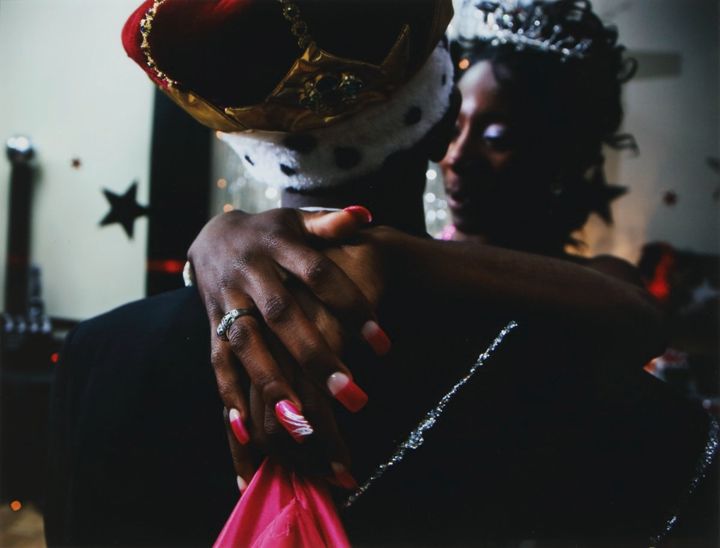
Gillian Laub is well known for her photographic series that depict charged social and political issues. Laub’s project Southern Rites is the result of a twelve-year engagement with issues of race and equality in Mt. Vernon, Georgia. The project visually explores Montgomery County High School’s prom and homecoming, which were racially segregated almost every year from 1971 to 2002, when Laub began her investigation. Laub’s photo essay brought a torrent of attention and outrage upon the town, leading to integration for the formal occasions.
Prom King and Queen Dance, Vidalia, Georgia
Gillian Laub, American, born 1975
2009
Dye coupler print
11 × 14 inches
Gift of Pharrell Williams
2015.368.1 -
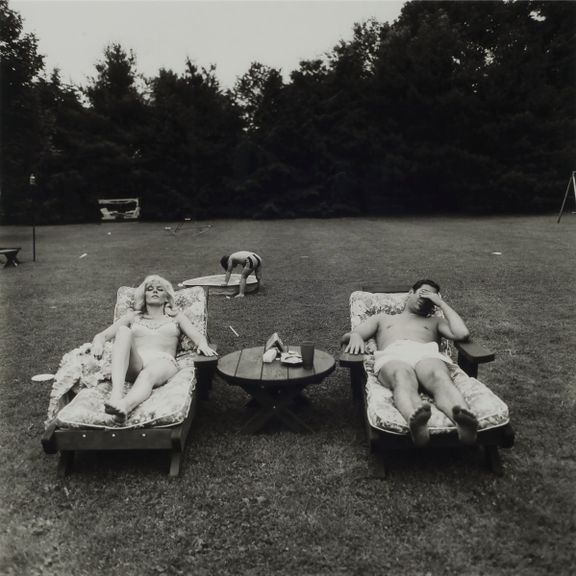
Throughout her career, photographer Diane Arbus focused her unsparing gaze on the unusual and eccentric. Sometimes these qualities were overtly visible in her subjects; more often she used her camera to ferret out the bizarre, strange, and occasionally violent currents beneath the placid veneer of postwar American life. Of this picture, she recounted, “They are a fascinating family. I think all families are creepy in a way.” The caption that accompanies this work, which shows only one of the couple’s three children, exudes a sense of disconnection, fantasy, and oblique grief: “The parents seem to be dreaming the child and the child seems to be inventing them.”
A Family on the Lawn One Sunday in Westchester in June, 1968
Diane Arbus, American, 1923–1971
1968, printed 1970
Gelatin silver print
14 3/4 × 15 inches
Purchase with funds from a friend of the Museum
74.81 C -
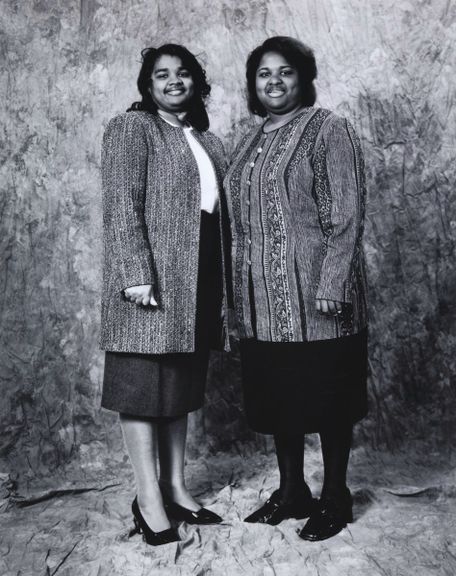
A photographer, bookmaker, and installation artist, Clarissa Sligh considers herself first and foremost a storyteller. After earning her bachelor’s in mathematics at Virginia’s Hampton Institute, she pursued a degree in art at Howard University, followed by an MBA from the Wharton School of Business at the University of Pennsylvania. Before devoting herself full time to art, she worked on NASA’s manned space flight program. This photograph shows two members of a Black church in Richmond, Virginia, that had been set on fire in 1996 in an act of racial terror. Although devastated, the congregants felt it was more important than ever to rebuild the church, both physically and spiritually.
Sisters Bailey and Melette
Clarissa Sligh, American, born 1939
undated
Gelatin silver print
19 7/8 × 15 15/16 inches
Gift of The National Millennium Survey organized by The College of Santa Fe and the Museum of Photographic Arts, San Diego
2005.172 -
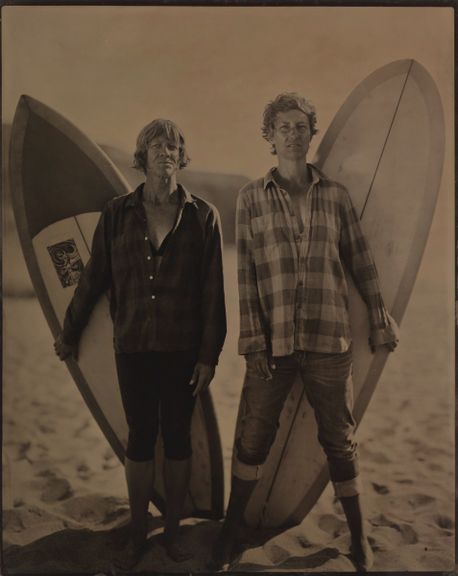
In Joni Sternbach’s Surfland series, what began as an attempt to capture the movement of waves became a documentation of surf culture. She was especially drawn to women surfers, such as the couple here, who run counter to masculine stereotypes around surfing. To make this photo, Sternbach employed the tintype process, which requires pouring chemicals onto a metal plate and then exposing and developing it on the spot, the perfect complement to her chosen subject matter. The swirling liquid chemicals echo the movement of the waves and the interplay between surfers and the water.
16.02.20 #8 Elise + Stacy, Santa Cruz, CA, from the Surfland series
Joni Sternbach, American, born 1953
2016
Tintype
11 × 14 inches
Gift of the artist
2020.175 -
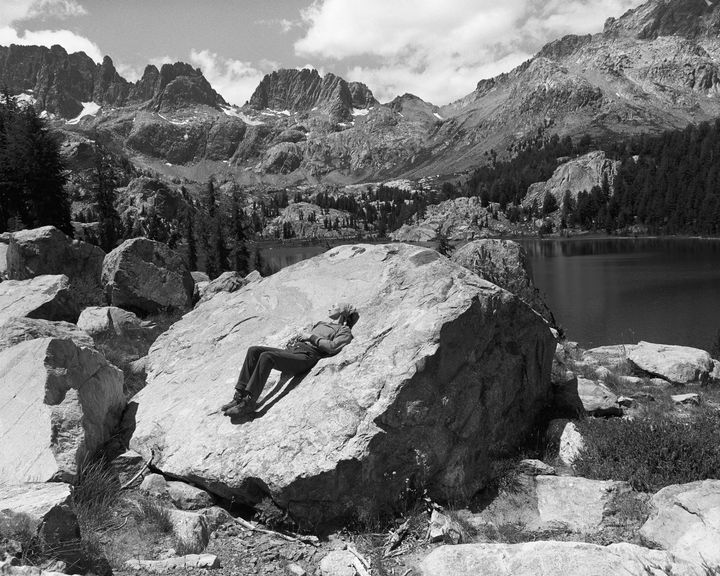
Kelli Connell is best known for her contemplative, narrative photographs that challenge norms of gender and sexuality and conventional understandings of the photographer/sitter relationship. In Pictures for Charis, she reconsiders the relationship between writer Charis Wilson and photographer Edward Weston. Over several years, Connell and her wife, Betsy, retraced the routes Weston and Wilson traveled in the late 1930s while making a book that featured Weston’s photographs and text by Wilson. Traveling to locations where Wilson and Weston spent time together, Connell collaboratively made photographs featuring Betsy within grand Western landscapes and in intimate domestic spaces.
Betsy, Lake Ediza
Kelli Connell, American, born 1974
2015
Pigmented inkjet print
40 × 50 inches
Purchase with funds from the Friends of Photography
2022.242 -
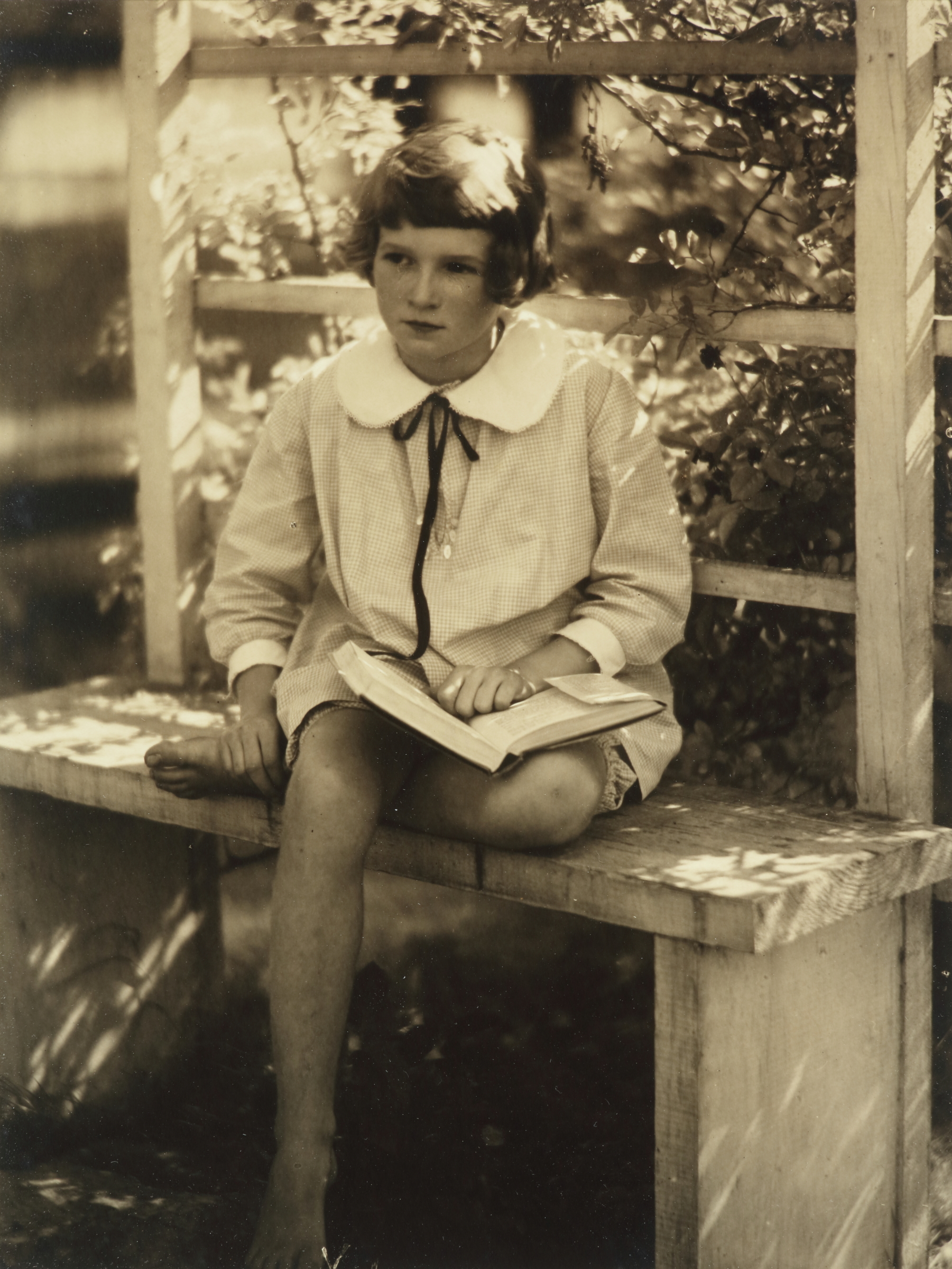
Doris Ulmann began her photographic career while attending the Clarence H. White School of Photography in New York—the first art photography school in the United States. There she worked in the Pictorialist tradition, which included embracing the “painterly” qualities of soft focus and manipulating surfaces. After undergoing a major surgery, Ulmann decided to pursue her interest in people “for whom life had not been a dance.” She began traveling throughout the southeastern United States documenting the folk traditions and people of the Appalachian Mountains. She made several sun-dappled portraits of this young girl (identified on other prints as “Kreiger girl”) in and around Berea, Kentucky.
Studious Girl, Fleischman Relative
Doris Ulmann, American, 1884–1934
before 1931
Platinum print
14 × 11 inches
Purchase
1977.74 -
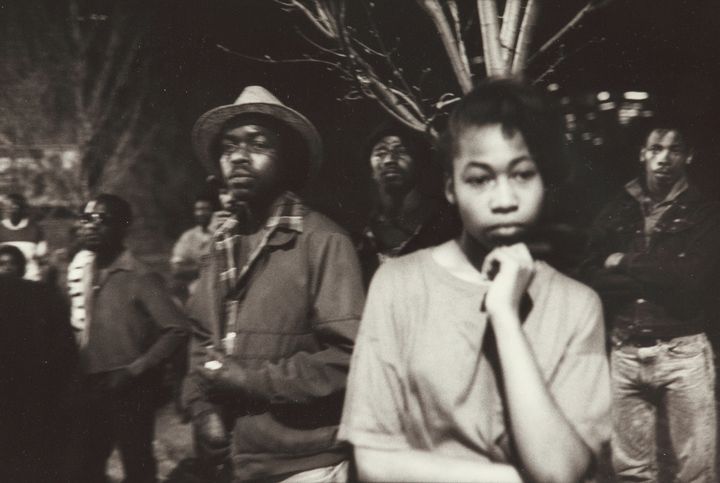
Before devoting herself full time to filmmaking, Ruth Leitman worked as a documentary photographer in Atlanta. This view of a pensive young woman made in Piedmont Park was part of a series on teenage girls that ultimately inspired Leitman’s first documentary film, Wildwood, NJ (1994), a sweet and piercing portrait of the girls and women she encountered at the popular, blue-collar seaside resort.
Untitled
Ruth Leitman, American, born 1961
1989
Gelatin silver print
8 × 10 inches
Gift of Ann and Ben Johnson
2000.276 -
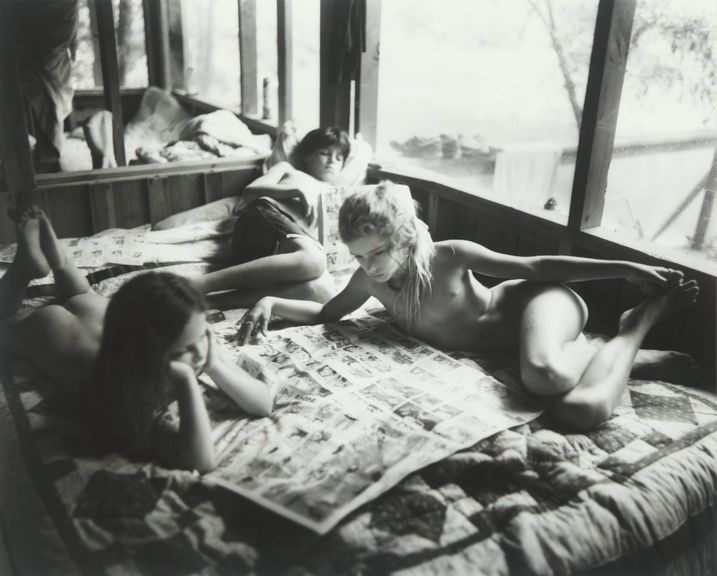
Sally Mann is renowned for her work exploring the beauty and complexities of family, motherhood, memory, and the history of the American South. From 1985 to 1994, Mann photographed the coming of age of her three children: Emmett, Jessie, and Virginia. One of the first photographers to explore in depth the psyche and drama of adolescence, Mann’s series, Immediate Family, is an intimate portrait of childhood through the tender eye of a mother. Although the children often directly confront the camera in the series, Sunday Funnies depicts a quiet scene when the children may not even realize their private moment is being lovingly captured.
Sunday Funnies
Sally Mann, American, born 1951
1991, printed 1995
Gelatin silver print
18 5/8 × 23 5/16
Purchase with funds from Lucinda W. Bunnen for the Bunnen Collection
1995.179 -
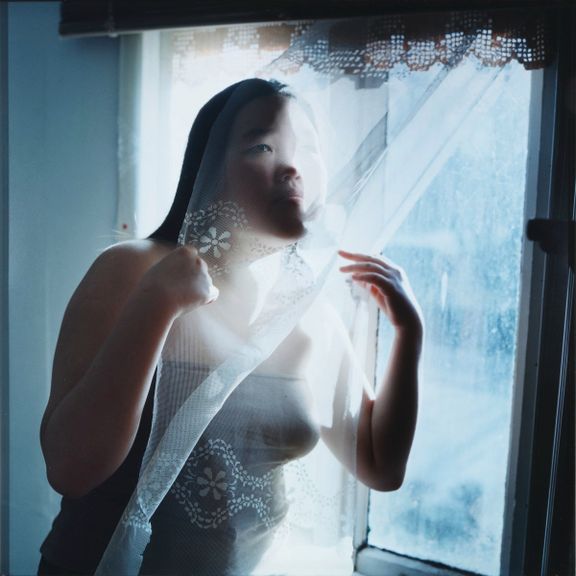
Self-confidence and uncertainty exist in tandem in Hellen van Meene’s carefully staged portraits of girls in the midst of the physical and psychological transitions between childhood and adulthood. Paired with van Meene’s use of soft fabrics and lighting, the portraits offer a dreamlike view of the subjects that reflects a level of trust between photographer and model. In describing this relationship, she says, “I really love my subjects. If I couldn’t give myself to them, then they couldn’t give themselves to me—and making the work would be impossible!” Using only the available natural light in a room, van Meene’s style has been compared to Dutch painter Johannes Vermeer.
Untitled
Hellen van Meene, Dutch, born 1972
1999
Dye coupler print
15 3/8 × 15 3/8 inches
Purchase with funds from the Director's Circle
2002.255 -
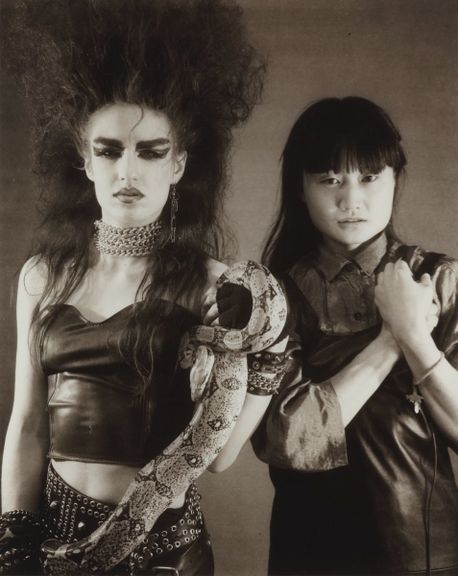
Born into the first postwar generation in Japan, Madoka Takagi graduated from art school with a focus on printmaking and soon turned to photography. Her fascination with the material aspects of printmaking is evident in the delicate, silvery platinum prints she made by brushing paper with a solution of platinum-based light-sensitive salts. This double portrait is part of an extensive series of self-portraits she staged with friends and acquaintances in New York, where she was ensconced within a vibrant and eclectic 1980s art scene.
Untitled
Madoka Takagi, American, born Japan, 1956–2015
1986
Platinum palladium print
9 5/8 × 7 15/16 inches
Gift of Dan and Mary Solomon
2021.62 -
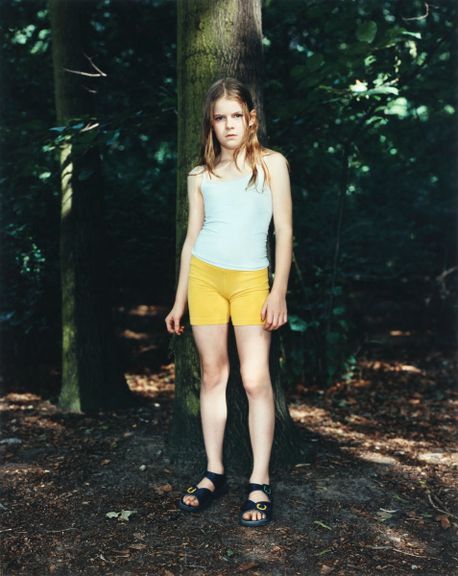
Shooting her subjects frontally and sometimes from below to monumentalize them, Rineke Dijkstra probes the vulnerability, emotional complexity, and awkwardness of adolescence. Using a large-format camera mounted on a tripod, she captures her subjects’ expression, pose, and gesture in mesmerizing detail. Because each exposure requires a separate sheet of film and precise adjustment of composition, making these photographs requires patience and time. Dijkstra has remarked that as her subjects wait for her to set up her exposure, they drop their social masks, revealing themselves guilelessly to the camera.
Tiergarten, Berlin, July 1
Rineke Dijkstra, Dutch, born 1959
2000
Dye coupler print
59 7/8 × 50 3/8 inches
Purchase with funds from the H. B. and Doris Massey Charitable Trust
2003.121 -
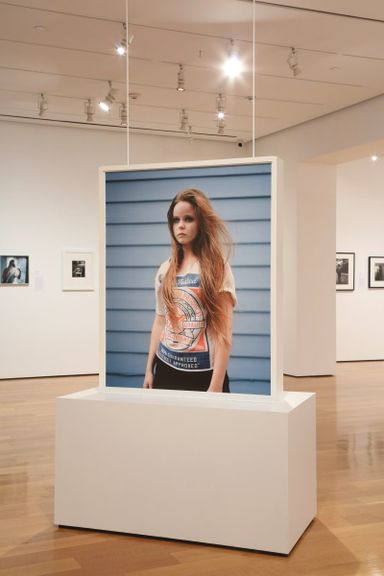
This double-sided piece is from Jill Frank’s series everyone who woke up at the yellow house, which she created one morning following a house party in Athens, Georgia. The two portraits of this young woman were taken moments apart, and it is in that instantaneous change of expression that Frank captures the fluidity of personal identity and emotion intrinsic to adolescence. Frank’s formal portraiture lends a seriousness to this chapter of life and the social rituals that accompany it. Rather than representing adolescence as a frivolous phase, she allows it to exist on its own terms and merit.
everyone who woke up at the yellow house
Jill Frank, American, born 1978
2016
Double sided inkjet print
50 × 40 × 8 inches
Gift of Louis Corrigan
2018.16 -
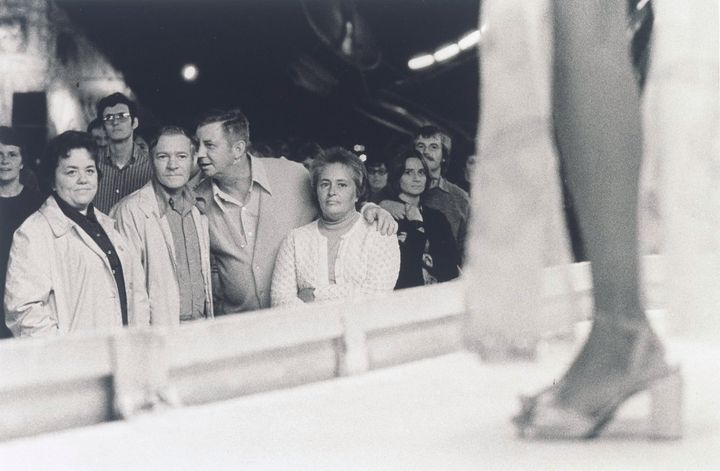
Susan Meiselas’s first major photographic essay, Carnival Strippers, focuses on the lives of women performing striptease in county fairs in New England, Pennsylvania, and South Carolina. From 1972 to 1975, Meiselas spent summers photographing and interviewing her subjects while teaching photography in New York public schools during the remainder of the year. She followed the “girl shows” from town to town, documenting the women’s performances as well as their private lives. Entrance to the strip shows was restricted to men, so she often had to disguise herself to photograph inside. Her project was noteworthy for its combination of audio interviews and photographs that allowed for a more immersive portrayal of these women’s lives and brought a rarely seen world to public attention.
The Wives, Essex Junction, Vermont
Susan Meiselas, American, born 1948
1974
Gelatin silver print
7 3/4 × 11 1/2 inches
Gift of Ron Beller and Jennifer Moses
2007.73.5 -
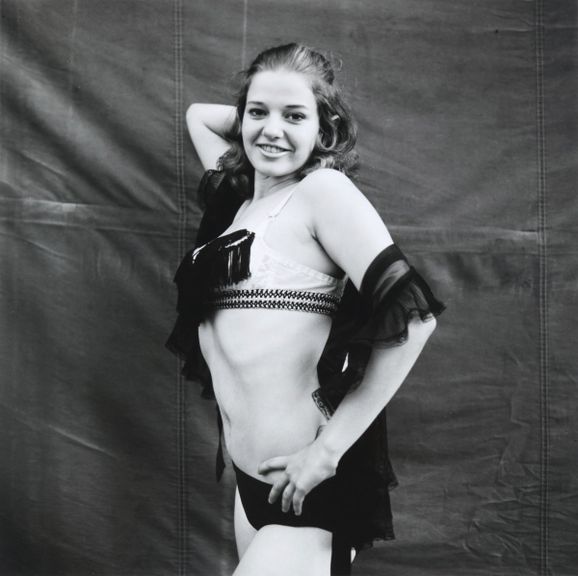
Lena’s First Day, Essex Junction, Vermont
Susan Meiselas, American, born 1948
1973
Gelatin silver print
7 7/8 × 7 7/8 inches
Gift of Ron Beller and Jennifer Moses
2007.73.11 -
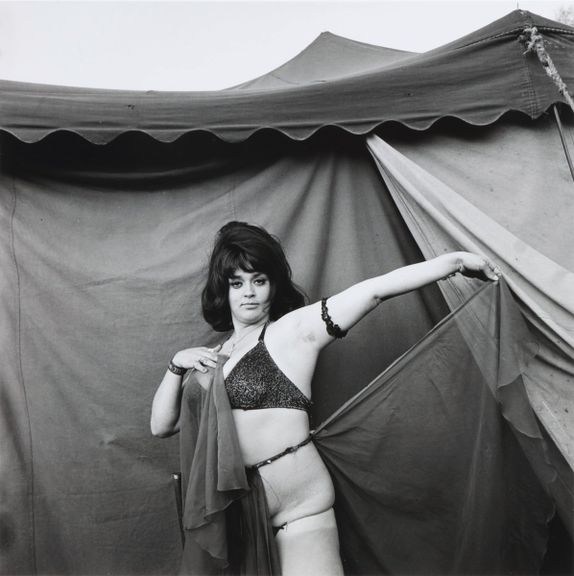
The Star, Tunbridge, Vermont
Susan Meiselas, American, born 1948
1975
Gelatin silver print
7 7/8 × 7 7/8 inches
Gift of Ron Beller and Jennifer Moses
2007.73.18 -
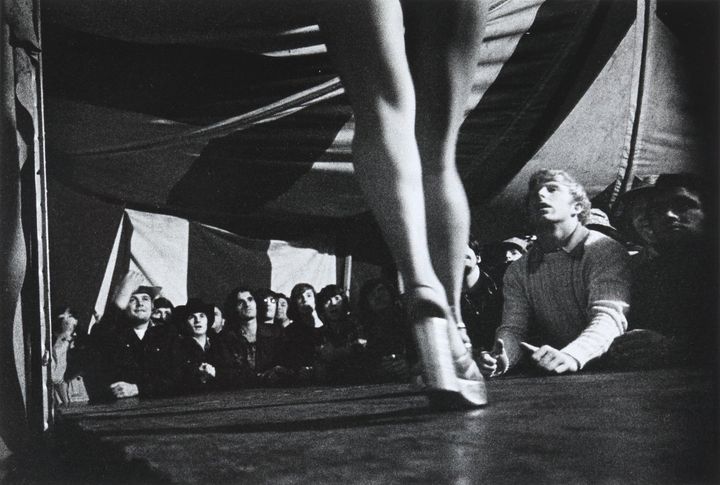
Tentful of Marks, Tunbridge, Vermont
Susan Meiselas, American, born 1948
1974
Gelatin silver print
7 3/4 × 11 1/2 inches
Gift of Ron Beller and Jennifer Moses
2007.73.17 -
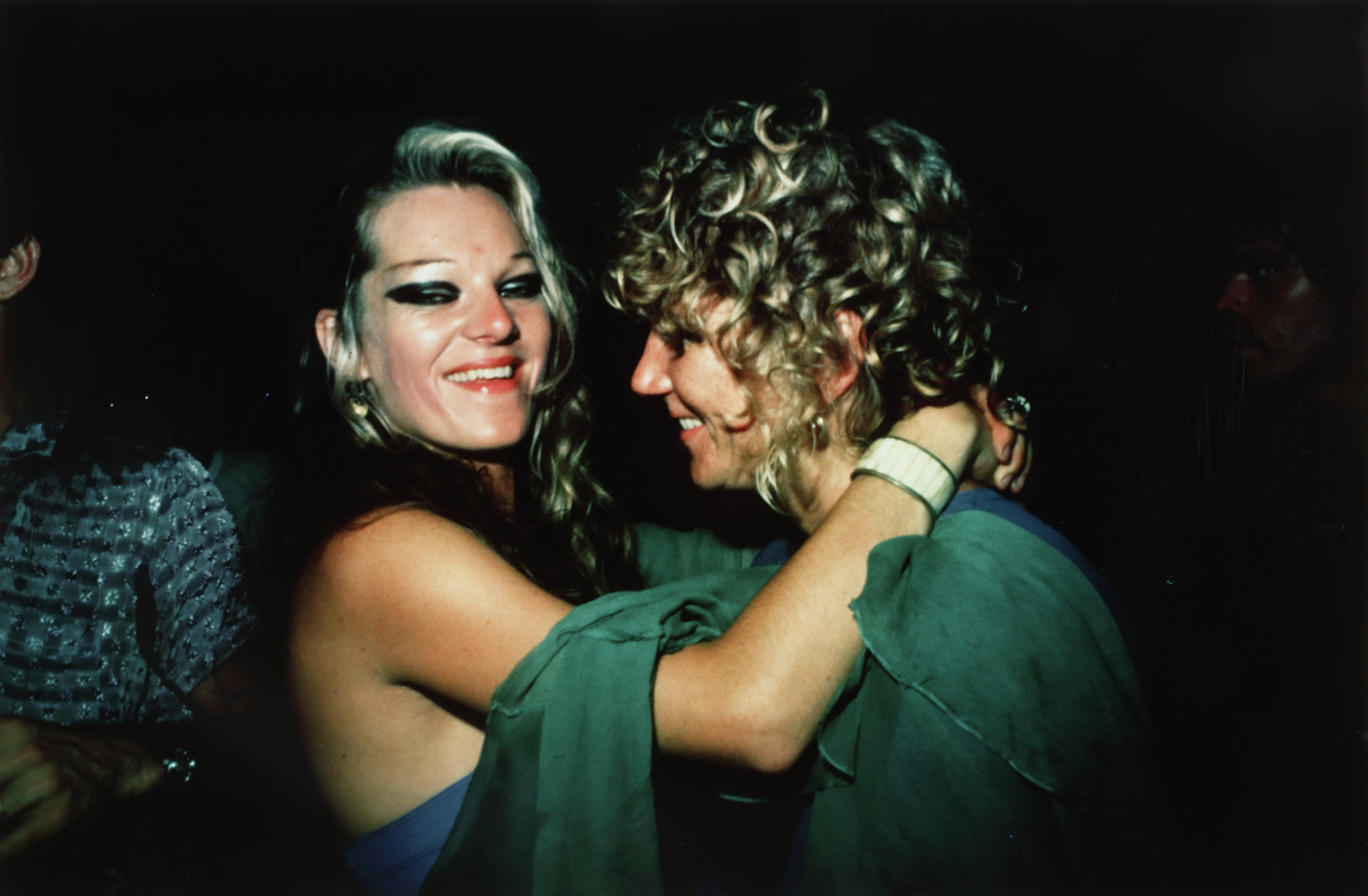
One of the most important photographers of her generation, Nan Goldin is an artist whose personal life is at the center of her art. Her Cookie Portfolio documents her intimate friendship with Cookie Mueller. In the top photograph, we see Cookie dancing jubilantly with her friend and lover Sharon. The bottom photograph, made thirteen years later, strikes a far more somber note as we see Sharon sitting at the front of the bed, disconnected from a frail-appearing Cookie, who lies underneath her wedding picture. Cookie’s husband, Vittorio, died from AIDS the month this picture was made, and Cookie would die two months later. Despite the palpable loss sensed in the distance between these two works, Goldin conveys the steadfastness and tenderness of female friendship and support, which also infused her process: “I’m looking with a warm eye, not a cold eye. I’m not analyzing what’s going on—I just get inspired to take a picture by the beauty and vulnerability of my friends.”
Cookie and Sharon Dancing at the Back Room, Provincetown, MA
Nan Goldin, American, born 1953
1976
Dye destruction print
20 × 16 inches
Gift of Lucinda W. Bunnen for the Bunnen Collection
2005.337.10 -
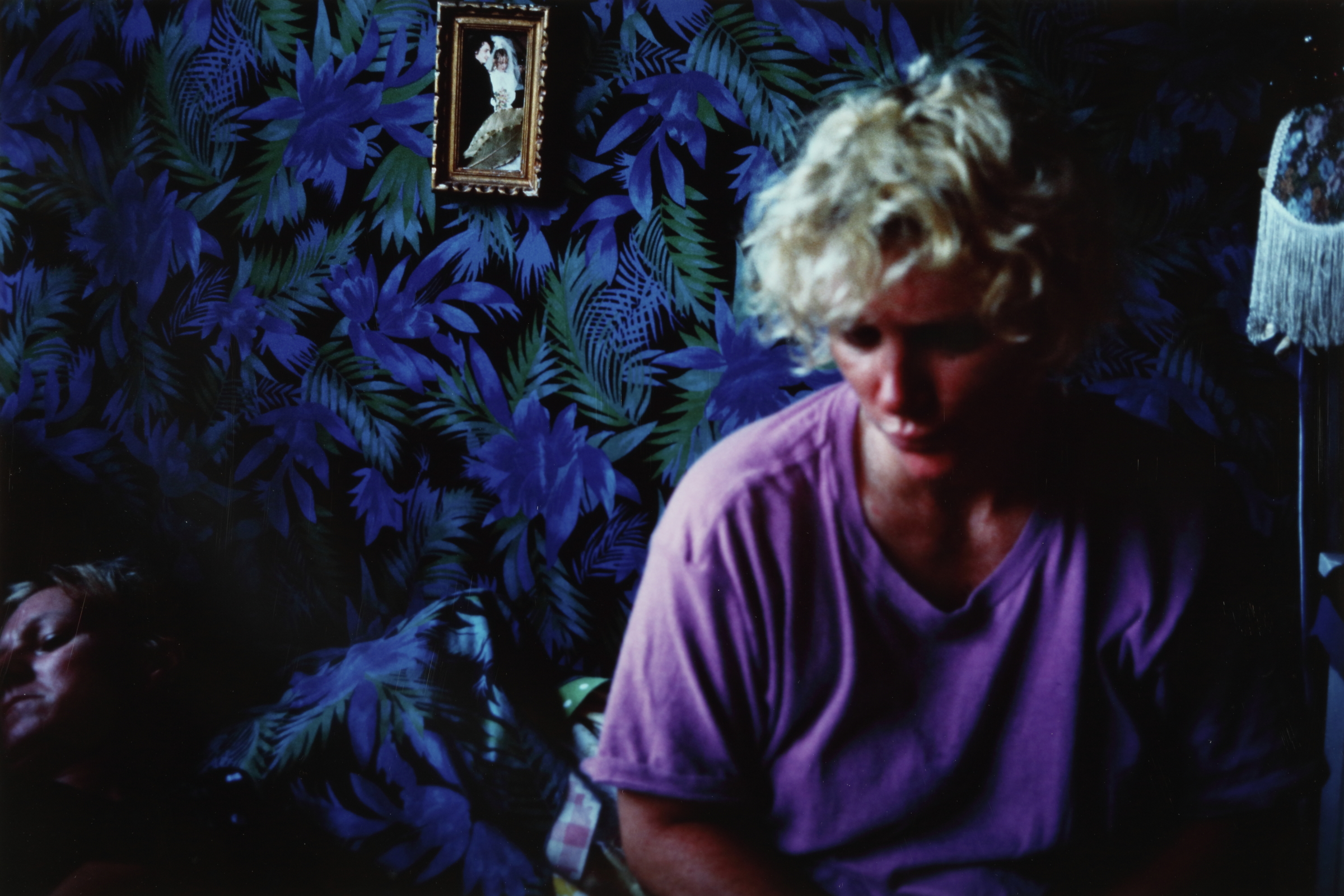
Cookie and Sharon on the Bed, Provincetown, MA, Sept. 1989
Nan Goldin, American, born 1953
1989
Dye destruction print
20 × 16 inches
Gift of Lucinda W. Bunnen for the Bunnen Collection
2005.337.7 -
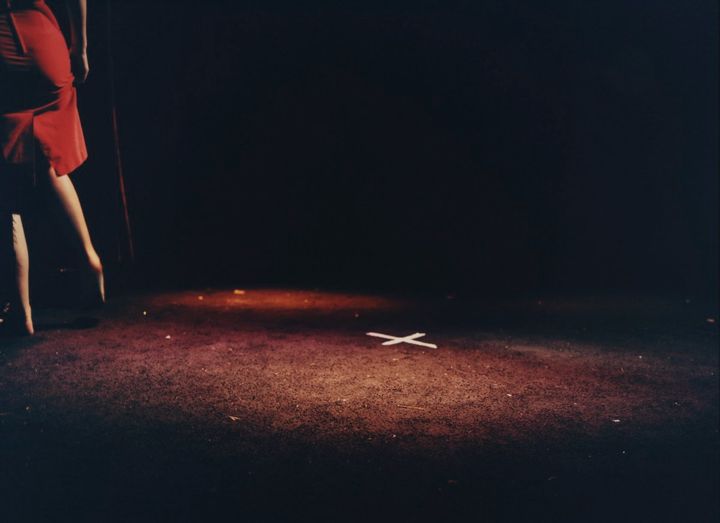
Over the past two decades, Lisa Kereszi has explored the emotional and formal qualities of abandoned sites and places shaped by human design and fantasy, including amusement parks, movie theaters, and strip clubs. In this view, part of a larger project on burlesque theater, Kereszi focuses not on the performer but on the lurid red colors and the inky shadows that fill the space with dramatic anticipation and longing. While the title refers to the place marker on stage, it also suggests the X-rated nature of the performance and the anonymity of the performer, whose back is turned to the viewer.
X Onstage, New Orleans
Lisa Kereszi, American, born 1973
2001
Chromogenic print
Image: 29 × 38 inches; paper: 30 × 40 inches
Gift of the artist
2020.355